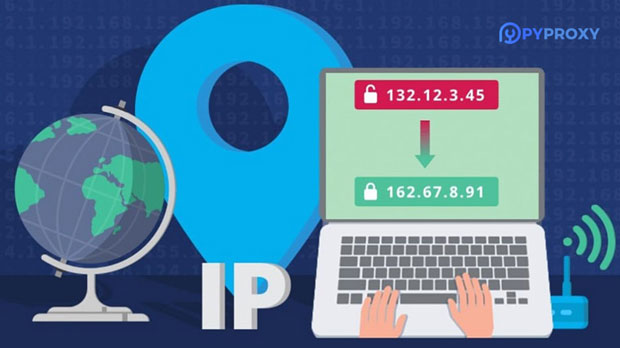When comparing free socks5 proxies to free HTTP proxies and SOCKS4 proxies, the differences lie in functionality, security, flexibility, and performance. Each type of proxy offers distinct advantages and limitations that can affect user experience and suitability for different purposes. SOCKS5, often seen as the most versatile and secure among them, provides a broader range of uses and higher security standards, while HTTP and SOCKS4 proxies have their own strengths, albeit with more limitations. This article will explore these differences in greater detail, focusing on the technical aspects and practical implications for users seeking anonymous browsing, secure connections, or general internet access. 1. Basic Functionality of HTTP, SOCKS4, and SOCKS5 ProxiesTo understand the differences between free HTTP proxies, SOCKS4, and SOCKS5, it's essential to grasp the core functionality of each. At the most basic level, all proxies act as intermediaries between a user’s device and the internet. They relay requests and responses, allowing users to conceal their real IP address or access content restricted to certain regions.- HTTP Proxy: This proxy only handles HTTP (HyperText Transfer Protocol) traffic, which is typically used for web browsing. HTTP proxies work at the application layer and can be configured to allow or block specific websites or content based on HTTP requests. - SOCKS4 Proxy: SOCKS4, or Socket Secure version 4, operates at a lower level of the network stack, supporting not just HTTP traffic but also other protocols like FTP, POP3, and SMTP. It establishes a secure tunnel to relay data, though it doesn’t handle encryption, leaving it less secure than newer proxies like SOCKS5.- socks5 proxy: SOCKS5, the most advanced version of the SOCKS protocol, supports a wide range of internet traffic, including HTTP, FTP, POP3, and more. It provides additional features such as authentication, error handling, and full support for IPv6, making it a robust choice for privacy-conscious users.2. Performance and SpeedWhen considering proxies, performance and speed are often key factors that determine which type is best suited for a particular use case.- HTTP Proxy: Since HTTP proxies only deal with web traffic, they tend to perform faster for web browsing purposes. However, this speed advantage can come at the cost of limited functionality, as HTTP proxies are not well-suited for handling other types of internet traffic or complex data exchanges.- SOCKS4 Proxy: While SOCKS4 proxies are designed to handle a broader range of internet traffic, they do not offer the same level of speed as HTTP proxies. This is due to the additional overhead involved in handling different protocols and establishing the connection tunnel.- SOCKS5 Proxy: SOCKS5 proxies, with their advanced features, generally offer better performance compared to SOCKS4 proxies. The added flexibility in handling different types of traffic can also help optimize connections for users involved in more complex online activities such as gaming, torrenting, or VoIP (Voice over IP) services.3. Security FeaturesThe security of a proxy server is often one of the most critical concerns for users, especially those who prioritize anonymity and data protection.- HTTP Proxy: HTTP proxies offer minimal security. They can be susceptible to various types of attacks such as DNS leaks, and they do not offer encryption for the data transmitted between the user and the server. As a result, sensitive information, including login credentials, can be exposed over unsecured HTTP connections.- SOCKS4 Proxy: While SOCKS4 proxies do not encrypt data, they are generally more secure than HTTP proxies due to their support for various protocols and the way they handle traffic. However, they still lack modern encryption features and leave data vulnerable to interception by hackers or malicious entities.- SOCKS5 Proxy: SOCKS5 proxies are considered the most secure option. They support authentication, ensuring that only authorized users can access the proxy. Additionally, SOCKS5 supports encryption, making it harder for malicious actors to intercept and view data transmitted through the proxy. These features make SOCKS5 a top choice for users who prioritize privacy and security.4. Authentication and FlexibilityThe ability to authenticate users and provide flexible connection options plays a major role in choosing between HTTP, SOCKS4, and SOCKS5 proxies.- HTTP Proxy: Most HTTP proxies do not require authentication, making them easy to set up and use for casual web browsing. However, the lack of authentication and flexibility limits their ability to serve more demanding use cases, such as accessing sensitive or restricted content.- SOCKS4 Proxy: SOCKS4 proxies are more flexible than HTTP proxies in that they support a wider variety of internet protocols. However, they lack the advanced authentication features that SOCKS5 offers, which can limit their appeal for those looking for secure, verified proxy connections.- SOCKS5 Proxy: SOCKS5 stands out in terms of authentication and flexibility. It allows for various types of user authentication, including password-based methods. This makes SOCKS5 suitable for individuals and businesses that require controlled access to their proxy server. Furthermore, SOCKS5 is compatible with IPv6 and can be used with a wide range of applications, from web browsing to file sharing.5. Use Cases and ApplicationsDifferent types of proxies cater to various use cases, depending on the user’s specific needs.- HTTP Proxy: HTTP proxies are best suited for basic web browsing, where the user is looking to access websites without concerns about handling other protocols. They are also often used to bypass geographic restrictions on websites or to filter content.- SOCKS4 Proxy: SOCKS4 proxies are more versatile than HTTP proxies, making them suitable for a variety of online activities such as email, file transfers, and even gaming. However, they are not recommended for high-security tasks or applications requiring encryption.- SOCKS5 Proxy: SOCKS5 proxies are ideal for users who need flexibility and security in their internet activities. They can be used for secure browsing, online gaming, VoIP services, and even peer-to-peer (P2P) file sharing. With built-in authentication and encryption, SOCKS5 is the proxy of choice for privacy-conscious users.6. Conclusion: Choosing the Right Proxy for Your NeedsWhen deciding between free HTTP proxies, SOCKS4, and SOCKS5 proxies, it's important to consider your specific requirements. While HTTP proxies are the fastest and easiest to use for simple web browsing, they offer minimal security and flexibility. SOCKS4 proxies strike a balance between performance and versatility but lack the advanced features found in SOCKS5 proxies. On the other hand, SOCKS5 proxies provide the most robust security, flexibility, and performance, making them the best choice for users who prioritize privacy and need to handle a wide range of internet traffic.Ultimately, the best proxy for you will depend on your internet usage patterns. If you’re looking for a fast, secure, and versatile solution, SOCKS5 is likely the ideal choice. However, if speed and simplicity are your main concerns, and you only need basic web browsing functionality, a free HTTP proxy may suffice. Understanding the strengths and weaknesses of each type of proxy will help you make a more informed decision based on your needs.
Jan 16, 2025





























































